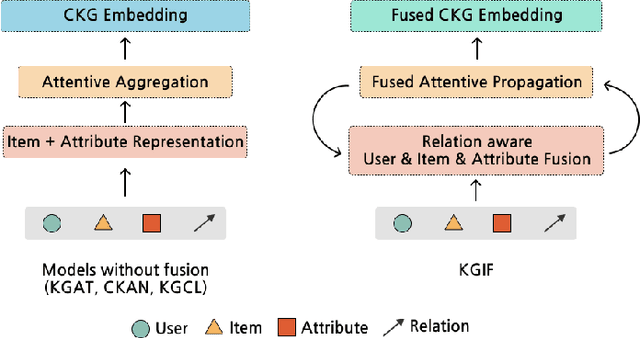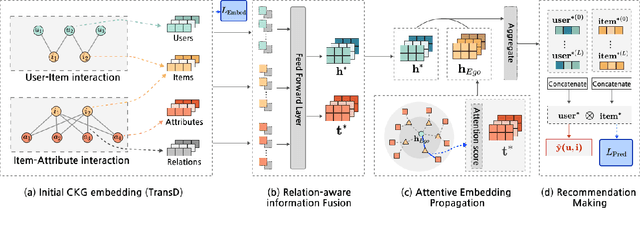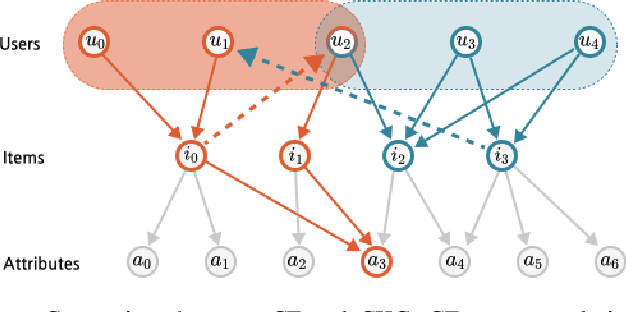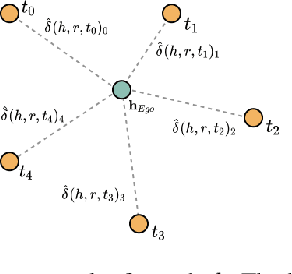Houbing Herbert Song
Efficient Neuro-Symbolic Retrieval-Augmented Generation through Adaptive Query Routing
Jun 15, 2025Abstract:Retrieval-Augmented Generation (RAG) systems address factual inconsistencies in Large Language Models by grounding generation in external knowledge, yet they face a fundamental efficiency problem: simple queries consume computational resources equivalent to complex multi-hop reasoning tasks. We present SymRAG, a neuro-symbolic framework that introduces adaptive query routing based on real-time complexity and system load assessments. SymRAG dynamically selects symbolic, neural, or hybrid processing paths to align resource use with query demands. Evaluated on 2,000 queries from HotpotQA and DROP using Llama-3.2-3B and Mistral-7B models, SymRAG achieves 97.6--100.0% exact match accuracy with significantly lower CPU utilization (3.6--6.2%) and processing time (0.985--3.165s). Disabling adaptive logic results in 169--1151% increase in processing time, highlighting the framework's impact. These results underscore the potential of adaptive neuro-symbolic routing for scalable, sustainable AI systems.
ACU: Analytic Continual Unlearning for Efficient and Exact Forgetting with Privacy Preservation
May 18, 2025Abstract:The development of artificial intelligence demands that models incrementally update knowledge by Continual Learning (CL) to adapt to open-world environments. To meet privacy and security requirements, Continual Unlearning (CU) emerges as an important problem, aiming to sequentially forget particular knowledge acquired during the CL phase. However, existing unlearning methods primarily focus on single-shot joint forgetting and face significant limitations when applied to CU. First, most existing methods require access to the retained dataset for re-training or fine-tuning, violating the inherent constraint in CL that historical data cannot be revisited. Second, these methods often suffer from a poor trade-off between system efficiency and model fidelity, making them vulnerable to being overwhelmed or degraded by adversaries through deliberately frequent requests. In this paper, we identify that the limitations of existing unlearning methods stem fundamentally from their reliance on gradient-based updates. To bridge the research gap at its root, we propose a novel gradient-free method for CU, named Analytic Continual Unlearning (ACU), for efficient and exact forgetting with historical data privacy preservation. In response to each unlearning request, our ACU recursively derives an analytical (i.e., closed-form) solution in an interpretable manner using the least squares method. Theoretical and experimental evaluations validate the superiority of our ACU on unlearning effectiveness, model fidelity, and system efficiency.
AFCL: Analytic Federated Continual Learning for Spatio-Temporal Invariance of Non-IID Data
May 18, 2025Abstract:Federated Continual Learning (FCL) enables distributed clients to collaboratively train a global model from online task streams in dynamic real-world scenarios. However, existing FCL methods face challenges of both spatial data heterogeneity among distributed clients and temporal data heterogeneity across online tasks. Such data heterogeneity significantly degrades the model performance with severe spatial-temporal catastrophic forgetting of local and past knowledge. In this paper, we identify that the root cause of this issue lies in the inherent vulnerability and sensitivity of gradients to non-IID data. To fundamentally address this issue, we propose a gradient-free method, named Analytic Federated Continual Learning (AFCL), by deriving analytical (i.e., closed-form) solutions from frozen extracted features. In local training, our AFCL enables single-epoch learning with only a lightweight forward-propagation process for each client. In global aggregation, the server can recursively and efficiently update the global model with single-round aggregation. Theoretical analyses validate that our AFCL achieves spatio-temporal invariance of non-IID data. This ideal property implies that, regardless of how heterogeneous the data are distributed across local clients and online tasks, the aggregated model of our AFCL remains invariant and identical to that of centralized joint learning. Extensive experiments show the consistent superiority of our AFCL over state-of-the-art baselines across various benchmark datasets and settings.
Topology-Driven Attribute Recovery for Attribute Missing Graph Learning in Social Internet of Things
Jan 17, 2025



Abstract:With the advancement of information technology, the Social Internet of Things (SIoT) has fostered the integration of physical devices and social networks, deepening the study of complex interaction patterns. Text Attribute Graphs (TAGs) capture both topological structures and semantic attributes, enhancing the analysis of complex interactions within the SIoT. However, existing graph learning methods are typically designed for complete attributed graphs, and the common issue of missing attributes in Attribute Missing Graphs (AMGs) increases the difficulty of analysis tasks. To address this, we propose the Topology-Driven Attribute Recovery (TDAR) framework, which leverages topological data for AMG learning. TDAR introduces an improved pre-filling method for initial attribute recovery using native graph topology. Additionally, it dynamically adjusts propagation weights and incorporates homogeneity strategies within the embedding space to suit AMGs' unique topological structures, effectively reducing noise during information propagation. Extensive experiments on public datasets demonstrate that TDAR significantly outperforms state-of-the-art methods in attribute reconstruction and downstream tasks, offering a robust solution to the challenges posed by AMGs. The code is available at https://github.com/limengran98/TDAR.
ANSR-DT: An Adaptive Neuro-Symbolic Learning and Reasoning Framework for Digital Twins
Jan 15, 2025Abstract:In this paper, we propose an Adaptive Neuro-Symbolic Learning Framework for digital twin technology called ``ANSR-DT." Our approach combines pattern recognition algorithms with reinforcement learning and symbolic reasoning to enable real-time learning and adaptive intelligence. This integration enhances the understanding of the environment and promotes continuous learning, leading to better and more effective decision-making in real-time for applications that require human-machine collaboration. We evaluated the \textit{ANSR-DT} framework for its ability to learn and adapt to dynamic patterns, observing significant improvements in decision accuracy, reliability, and interpretability when compared to existing state-of-the-art methods. However, challenges still exist in extracting and integrating symbolic rules in complex environments, which limits the full potential of our framework in heterogeneous settings. Moreover, our ongoing research aims to address this issue in the future by ensuring seamless integration of neural models at large. In addition, our open-source implementation promotes reproducibility and encourages future research to build on our foundational work.
KGIF: Optimizing Relation-Aware Recommendations with Knowledge Graph Information Fusion
Jan 07, 2025



Abstract:While deep-learning-enabled recommender systems demonstrate strong performance benchmarks, many struggle to adapt effectively in real-world environments due to limited use of user-item relationship data and insufficient transparency in recommendation generation. Traditional collaborative filtering approaches fail to integrate multifaceted item attributes, and although Factorization Machines account for item-specific details, they overlook broader relational patterns. Collaborative knowledge graph-based models have progressed by embedding user-item interactions with item-attribute relationships, offering a holistic perspective on interconnected entities. However, these models frequently aggregate attribute and interaction data in an implicit manner, leaving valuable relational nuances underutilized. This study introduces the Knowledge Graph Attention Network with Information Fusion (KGIF), a specialized framework designed to merge entity and relation embeddings explicitly through a tailored self-attention mechanism. The KGIF framework integrates reparameterization via dynamic projection vectors, enabling embeddings to adaptively represent intricate relationships within knowledge graphs. This explicit fusion enhances the interplay between user-item interactions and item-attribute relationships, providing a nuanced balance between user-centric and item-centric representations. An attentive propagation mechanism further optimizes knowledge graph embeddings, capturing multi-layered interaction patterns. The contributions of this work include an innovative method for explicit information fusion, improved robustness for sparse knowledge graphs, and the ability to generate explainable recommendations through interpretable path visualization.
TS-ACL: A Time Series Analytic Continual Learning Framework for Privacy-Preserving and Class-Incremental Pattern Recognition
Oct 21, 2024Abstract:Class-incremental Learning (CIL) in Time Series Classification (TSC) aims to incrementally train models using the streaming time series data that arrives continuously. The main problem in this scenario is catastrophic forgetting, i.e., training models with new samples inevitably leads to the forgetting of previously learned knowledge. Among existing methods, the replay-based methods achieve satisfactory performance but compromise privacy, while exemplar-free methods protect privacy but suffer from low accuracy. However, more critically, owing to their reliance on gradient-based update techniques, these existing methods fundamentally cannot solve the catastrophic forgetting problem. In TSC scenarios with continuously arriving data and temporally shifting distributions, these methods become even less practical. In this paper, we propose a Time Series Analytic Continual Learning framework, called TS-ACL. Inspired by analytical learning, TS-ACL transforms neural network updates into gradient-free linear regression problems, thereby fundamentally mitigating catastrophic forgetting. Specifically, employing a pre-trained and frozen feature extraction encoder, TS-ACL only needs to update its analytic classifier recursively in a lightweight manner that is highly suitable for real-time applications and large-scale data processing. Additionally, we theoretically demonstrate that the model obtained recursively through the TS-ACL is exactly equivalent to a model trained on the complete dataset in a centralized manner, thereby establishing the property of absolute knowledge memory. Extensive experiments validate the superior performance of our TS-ACL.
Decoding Android Malware with a Fraction of Features: An Attention-Enhanced MLP-SVM Approach
Sep 28, 2024Abstract:The escalating sophistication of Android malware poses significant challenges to traditional detection methods, necessitating innovative approaches that can efficiently identify and classify threats with high precision. This paper introduces a novel framework that synergistically integrates an attention-enhanced Multi-Layer Perceptron (MLP) with a Support Vector Machine (SVM) to make Android malware detection and classification more effective. By carefully analyzing a mere 47 features out of over 9,760 available in the comprehensive CCCS-CIC-AndMal-2020 dataset, our MLP-SVM model achieves an impressive accuracy over 99% in identifying malicious applications. The MLP, enhanced with an attention mechanism, focuses on the most discriminative features and further reduces the 47 features to only 14 components using Linear Discriminant Analysis (LDA). Despite this significant reduction in dimensionality, the SVM component, equipped with an RBF kernel, excels in mapping these components to a high-dimensional space, facilitating precise classification of malware into their respective families. Rigorous evaluations, encompassing accuracy, precision, recall, and F1-score metrics, confirm the superiority of our approach compared to existing state-of-the-art techniques. The proposed framework not only significantly reduces the computational complexity by leveraging a compact feature set but also exhibits resilience against the evolving Android malware landscape.
A Survey on Verification and Validation, Testing and Evaluations of Neurosymbolic Artificial Intelligence
Jan 10, 2024Abstract:Neurosymbolic artificial intelligence (AI) is an emerging branch of AI that combines the strengths of symbolic AI and sub-symbolic AI. A major drawback of sub-symbolic AI is that it acts as a "black box", meaning that predictions are difficult to explain, making the testing & evaluation (T&E) and validation & verification (V&V) processes of a system that uses sub-symbolic AI a challenge. Since neurosymbolic AI combines the advantages of both symbolic and sub-symbolic AI, this survey explores how neurosymbolic applications can ease the V&V process. This survey considers two taxonomies of neurosymbolic AI, evaluates them, and analyzes which algorithms are commonly used as the symbolic and sub-symbolic components in current applications. Additionally, an overview of current techniques for the T&E and V&V processes of these components is provided. Furthermore, it is investigated how the symbolic part is used for T&E and V&V purposes in current neurosymbolic applications. Our research shows that neurosymbolic AI as great potential to ease the T&E and V&V processes of sub-symbolic AI by leveraging the possibilities of symbolic AI. Additionally, the applicability of current T&E and V&V methods to neurosymbolic AI is assessed, and how different neurosymbolic architectures can impact these methods is explored. It is found that current T&E and V&V techniques are partly sufficient to test, evaluate, verify, or validate the symbolic and sub-symbolic part of neurosymbolic applications independently, while some of them use approaches where current T&E and V&V methods are not applicable by default, and adjustments or even new approaches are needed. Our research shows that there is great potential in using symbolic AI to test, evaluate, verify, or validate the predictions of a sub-symbolic model, making neurosymbolic AI an interesting research direction for safe, secure, and trustworthy AI.
 Add to Chrome
Add to Chrome Add to Firefox
Add to Firefox Add to Edge
Add to Edge